
Announcing the winners of the 2020 Fairy Tales competition
By Alexander Walter|
Thursday, Apr 9, 2020
Related
The wait is over: Blank Space just announced the winners of its anticipated 2020 Fairy Tales competition, and boy, are they dystopian and gripping again. Themes of environmental collapse, existential crisis, violent realities, and prevailing uncertainty — reflections of these current times — dominated the top winning entries which impressed through creative storytelling and stunning illustrations.
"As our actual lives have become increasingly surreal," said jury member Marc Tsurumaki, Principal at LTL Architects, adding, "these stories' engagement of both the inherent darkness and optimism of the Fairy Tale became particularly resonant."
From a large international pool of submissions, the jury picked three prize-winning short stories and eleven honorable mentions.
Keep scrolling to learn more.
1ST PLACE: "The Year Without a Winter" by Tamás Fischer and Carlotta
Cominetti

From the winners: "We wrote our story thinking about the moment when the world has to stop and people have to change their habits to avoid the collapse and to protect themselves from an unfamiliar event, like a very strong and sudden climate change. We now realise how our story can look like the situation the world is experiencing today: waiting, boredom, loneliness, regrets, social media as the only way out. But what we really wanted to highlight is how emergency situations can lead to a real turning point. Difficult situations lead people to think more and use their creativity differently. Since this pandemic started, we have been talking about a life-changing event, which is exactly the subject of our story. Our lives will change, but for the better." — Tamás Fischer and Carlotta Cominetti
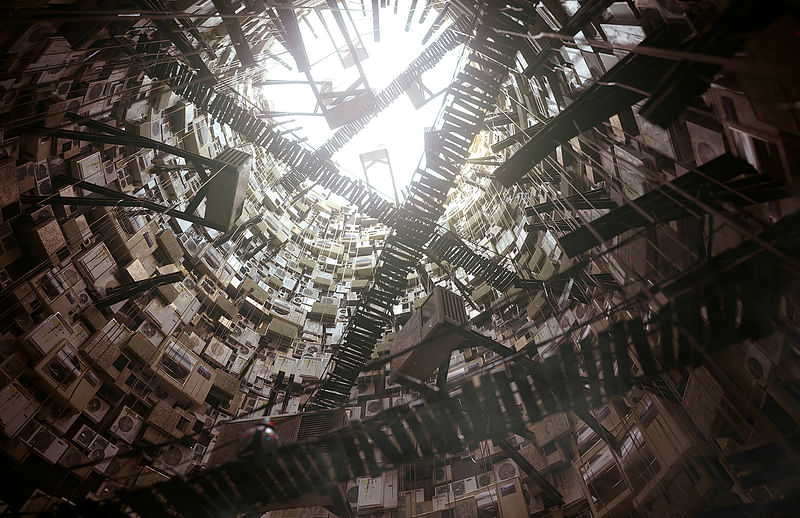
About the authors: "Tamàs Fischer, from Hungary, and Carlotta Cominetti, from Italy, are co-founders of VIRGINLEMON, a production company for architectural imagery and animation. Both Tamás and Carlotta love architecture and are passionate about spaces, forms and materials. In search of the right way to express this passion of theirs, they worked at various architectural studios. Soon after they met each other in 2013, they decided to try something on their own. The point was to create a space where they could link up with other architects and exchange different ideas and points of views, as they wanted their daily jobs to find new and interesting ways of communication through images, 3D illustration and Animation."
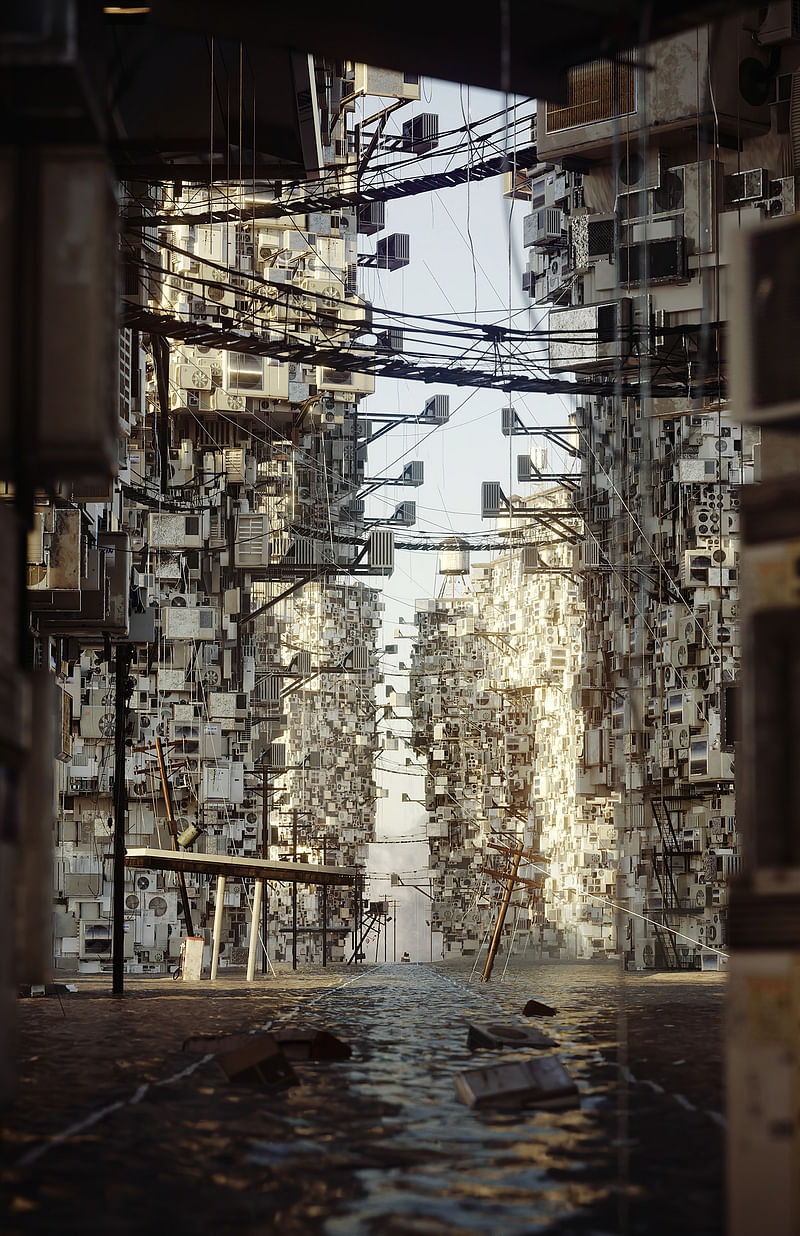
Excerpt
I had decided to leave alone for the summer holidays that year, it would have been the last journey of my old orange Pripyat, a Soviet-style three-door car, produced until 1972 at the Kommunor plant, today in Ukraine.
It was not a family inheritance but rather a typical nostalgic caprice, something that frequently happens to people in their thirties, a smart investment that after ten years would have yielded up to four hundred percent of profits, much more than any bank deposit or pension fund. I always think about my future.
A month later, my town was exactly as I had left it. At 9pm on September 14th, the sun was setting on the horizon and I checked, as scheduled, the last point of my summer program: "remember to take the East road with the sun behind you". It could be dangerous, my glasses weren't polarized.
Thinking about my journey, it was a special one, maybe even a little nostalgic, but beautiful and international. I had pushed myself (in fact I literally pushed my car) to reach the ocean. Wonderful! Colourful! Powerful! I was camping in the wild, right behind the official surf camp where people were young and beautiful, blond, tonic, smiling and tanned. Never had the chance to approach them.
Every night around midnight I zipped the tent. Silence. From time to time just the breaths of a couple making love in the dark, on the sand.
In November the temperatures were still 10 degrees above the seasonal averages. I started thinking differently about those nights, with a sense of regret. Sometimes almost with anger.
Like many others, I was spending my days wondering why I'd come back to the city.
People were lazy and sweaty. At work, production fell by 45 percent and every provision was postponed to a date to be defined.
On December 8th the state of national emergency had been declared. [...]
2nd PLACE: "SYMBIOSIS" by Aleksandr Čebotariov and Laura Kuršvietytė

From the winners: "Our fairy tale is a naive attempt to address the issue of different kinds of crises we are experiencing - not only ecological, but social and existential as well. In the routine of everyday life, based on capitalism, we tend to lose ourselves to our jobs, our forests to fields and commerce. We forget our capabilities, such as senses, of our natural organisms, and many other things. We were mostly inspired by The Swamp School, a Lithuanian pavilion at the 16th Venice Architecture Biennale, where we volunteered, its creators Nomeda and Gediminas Urbonai, and after that living in an urban environment of Brussels stimulated our thoughts, collected in Venice." — Aleksandr Čebotariov and Laura Kuršvietytė

About the authors: "Laura is currently working as a 3D artist in a Brussels-based studio and has recently started enjoying this field more and more as a way to express some architectural or not so architectural, more dreamy thoughts, though she studied architecture. Originally she is from Lithuania, from where she pulls her deepest inspirations and where her constant search for nature is rooted. Aleksandr is from a small village in Lithuania, growing up close to nature. After finishing his architecture studies, he moved to Brussels, where he works now."
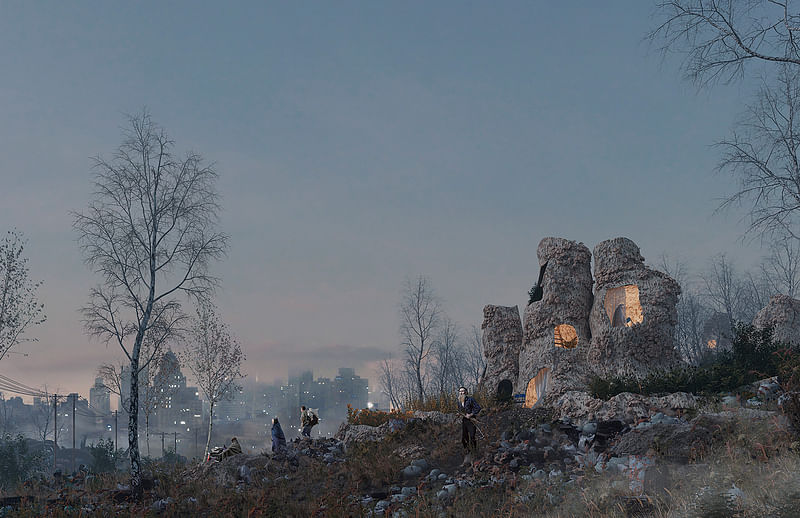
Excerpt
""The cities have lost their smells," says a resident of Amazon-3. "We are living in a constant bubble of smog where it doesn’t matter anymore what you drink or eat, whether it stinks or not. It’s like everything has drown into this grey nothingness. Practically we don’t need to use our senses anymore…""
(scrolls)
(blink) (blink) (blink)
"Clean home – clear mind.
SPRAY! RESIST THE PATHOGENIC FUNGUS."
(blink) (blink) (blink)
(scrolls)
"More and more people claim to be indifferent to society, to their country‘s well-being or economic state. The recent study revealed that people have lost their belief in capitalistic system. It has proven to be unhumane, destructive and possesive. It has taken all of the planet‘s resources and, knowing the capitalistic values, it can be stated that it is not capable of giving them back. "The world is in stagnation," the study states, "but there might be a hope for change. The chance of the new possible system is not excluded." "
(swipes to another website)
"The new species of fungi has been found. It has proved to be giving shelter to homeless people in the suburbs of Amazon-5.
Mycologists claim that the risen temperatures are the major factor due to which this new species emerged. Climate crisis has appeared to be not critical at all to the new fungi, on the contrary – it, the fungi – the so called Mycelius Salvator has been flourishing in warm and humid climatic conditions.
The co-existence between the fungi and people has been noticed. It seems that the former landfill in the periphery of Amazon-5 has been transforming itself into the thriving gardens and fields, most likely to this mysterious fungi-people symbiosis that has emerged just recently. "People are feeding Mycelius Salvator with an organic waste, and by that it grows into these fantastic structures that actually provide home for them, leaving compost to fertilize the grounds... It‘s all about exchanging. It seems like a perfect ecological cycle to me," mycologist explains."
(locks the phone)
A sudden glimpse of a strangely shaped wood-like object he might have seen in his trashbin today pops out in his mind. [...]
3RD PLACE: "Lloronas of Juárez" by Albert Orozco and Edward Rivero
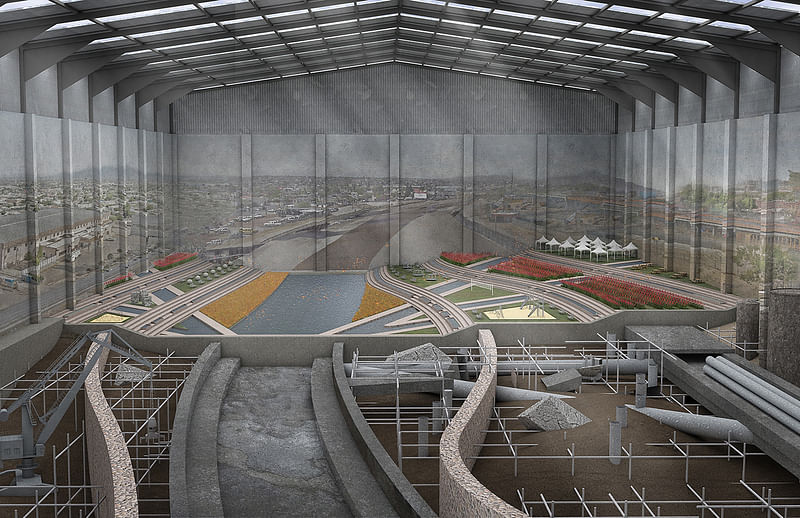
From the winners: ""Lloronas of Juarez" is a narrative of the ongoing violence against migrants, specifically women and children, that is enacted through national borders by settler-colonial states. Through an intersectional analysis, we leverage protest art, historical narrative, and landscape urbanism to re-imagine what the ecologies around the Mexico/U.S. border can become if we move toward more relational ways of connecting to the land. Specifically, our project critiques racist immigration policies, gendered ideologies, and xenophobic logics that converge in the design and construction of borders and prisons. We call attention to the urgency of abolishing detention centers that imprison migrant communities throughout the United States through a story of struggle and resistance portrayed by the protagonists of the story. We hope to dream in solidarity with migrants, immigrant rights activists, critical scholars, artists, designers, as well as other community organizers, who continue to resist empire-building toward the development of a future without borders." — Albert Orozco and Edward Rivero
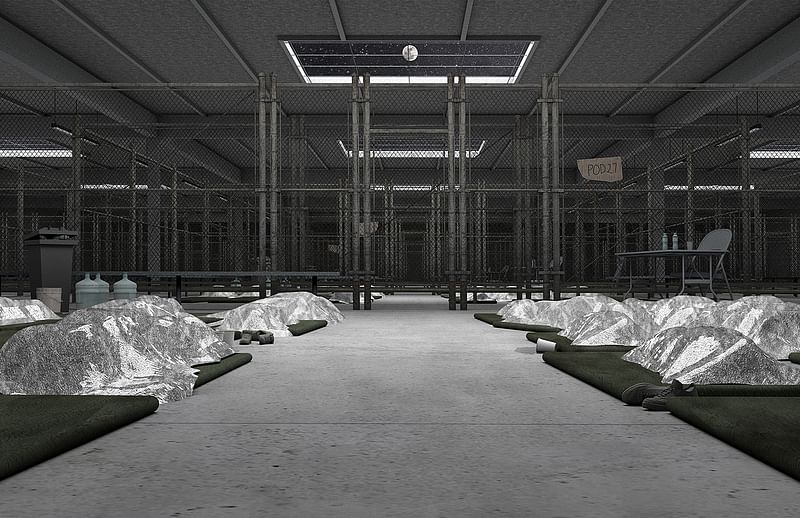
About the authors: "Albert Orozco is an architectural designer based in Los Angeles, California who dedicates himself to exploring projects that reflect issues of the environment, racism, immigration, and identity. His current work interweaves Mexican-American histories, mythologies, and geographies with architectural design to orchestrate scenographic stories that critique colonial architecture. Specifically, he hopes to create more collaborative spaces between artists, scholars, activists, and designers to imagine more ecologically sustainable spaces for historically dispossessed communities. Edward Rivero is a learning scientist interested in the intersections of learning, power, and designing with technologies. His current work examines the narratives and ideologies that emerge in the design processes of children from non-dominant communities in tinkering programs. Through participatory design-based research, Edward also works with the educator and teen-facilitators in the after-school tinkering program to design discussions that historicize technologies, digital, and making activities."
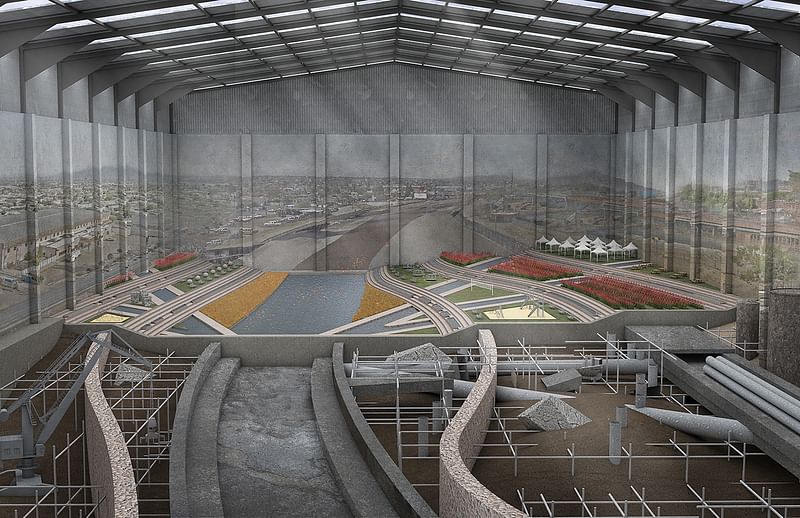
Excerpt
3:33 am
Ma, Ma, Mama!
Where are you mom?
Juanito woke up from a nightmare on the cold ground floor covered in sweat. His thin space blanket laid a few inches from his grasp and his dilapidated sleeping pad had slipped underneath his feet. Auntie Margarita, who slept next to him, woke up to his screams and began to caress his shoulder.
“shh...shh...shh, everything is going to be okay,” Auntie Margarita whispered.
“I saw La Llorona, the wailing woman, in my dream Auntie” cried Juanito. She was wearing a white dress, trailing me through the Rio Grande in our old city of Juárez, screaming “oh my children, where are my children.” She caught up to me, grabbed me, and then I woke up. Ay! Auntie, I am so scared!”
“My dear boy, there is nothing to be afraid of,” Auntie Margarita assured him. “You know that the story of La Llorona is nothing but a tale adults tell their children to keep them out of the streets at night. I am here with you. Do not be afraid.”
Margarita gazed out into the dark space of the detention center, lost in thought, and focused on the countless children sleeping next to her. As the moonlight danced around the holes of the wired fences that caged them in, Margarita thought about La Llorona’s pain; the pain of losing her children and wandering for an eternity in search for them.
“Auntie?” Juanito asked perplexed by Margarita’s daydreaming. “Isn’t La Llorona an evil witch that kidnaps children?”
“No Juanito. Women are always villainized in these myths created by men. Let me tell you a different story of La Llorona. Remember the maquiladoras, the factories in Juárez, where your mom used to work before we journeyed to the United States? Well, your mother and other maquiladora workers are gathering to come up with a plan to rescue you and all their children. They call themselves “Lloronas of Juárez.” They are a collective of mothers who have been separated from their children by the border patrol. When their bosses go home, they gather in these factories to work on projects that call for the abolition of detention centers and that reimagine the infrastructure along the border.” [...]
The 11 honorable mentions are:
- Diego Grisaleña Albéniz and James Mitchell for ““H.A.N.D, I DO””
- Amit Avni for “Back to Eden”
- Anton Markus Pasing of Remote Controlled Studio for “USO-03 unit A_Upstream Strategic Outposts”
- Eric & Eva de Broche des Combes for “7121 Lonzo”
- Jiawei Liang and Wei Wu for “Ghostly Presence”
- Marie Walker-Smith for “Rothiemurchus 2098”
- Ioanna Sotiriou & Maria Tsilogianni for “Mickey’s Mechanical House”
- Therese Leick and Wilhelm Scheruebl for “breath”
- Stefano Stecchelli, Carlo Occhipinti, Ilaria Caraffi, Francesco Bacci, and Carlo Canepa of To Nowhere Studio for “Post-reality framework”
- Lindsay Harkema for “Active Ornament”
- Suada Dema for “Purgatory”
The jury included Alison Brooks (Alison Brooks Architects), Marc Tsurumaki (LTL Architects), Jenny Wu and Dwayne Oyler (Oyler Wu Collaborative), Beatriz Colomina (Architectural Historian), Mecky Reuss and Ana Paula Ruiz Galindo (Pedro y Juana), Gail Carson Levine (Author), Arthur Mamou-Mani (Mamou-Mani LTD), Manuelle Gautrand (Manuelle Gautrand Architecture), Lorena Cano Acosta and Nicolas Mendoza Ramos (Fairy Tales 2019 Winners), Alexander Walter (Archinect & Bustler), David Basulto (ArchDaily), Sarah Curry and Adam Fogel (AIAS), Matthew Hoffman, Francesca Giuliani and Anna Creatura (Blank Space).
Don't forget to take a look at the honorable mentions in the image gallery below.
RELATED COMPETITION Fairy Tales 2020

RELATED NEWS The 2019 Fairy Tales competition winners use stories to grapple with issues of immigration, sustainability and the future!

RELATED NEWS Announcing the 2018 Fairy Tales Architecture Competition winners!

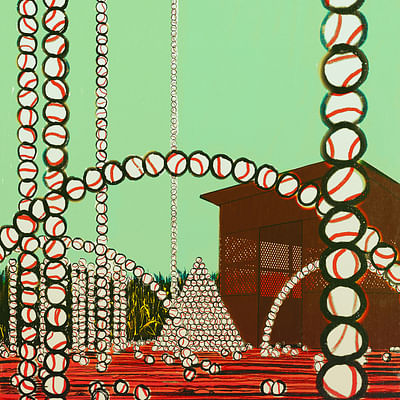
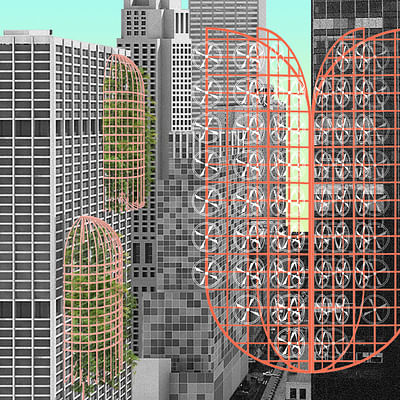
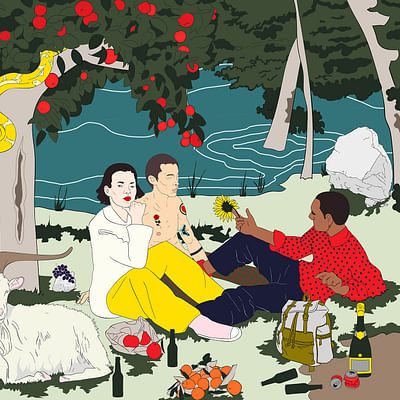
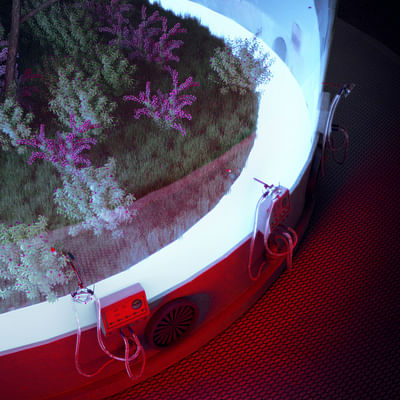

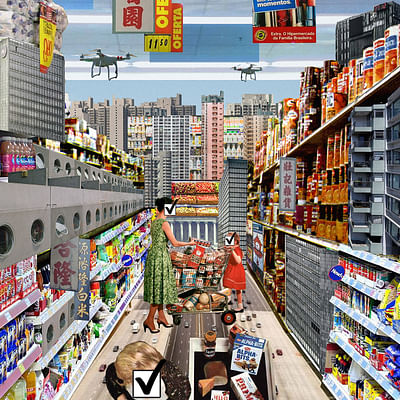
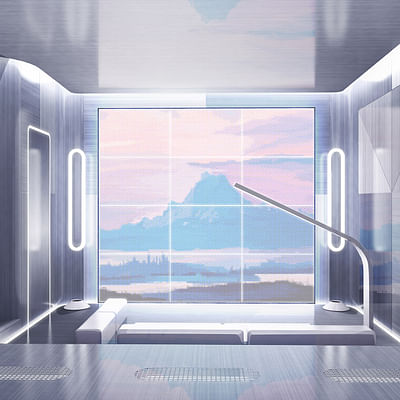
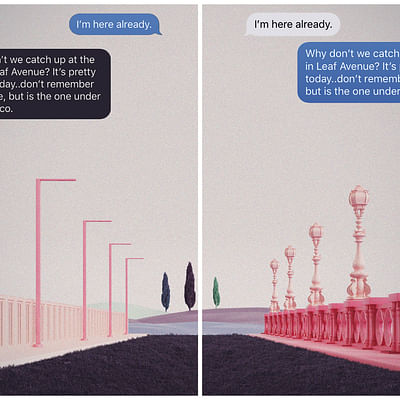

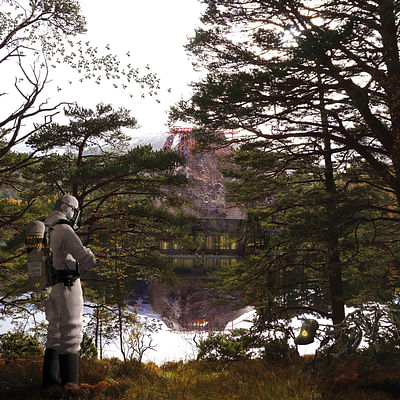
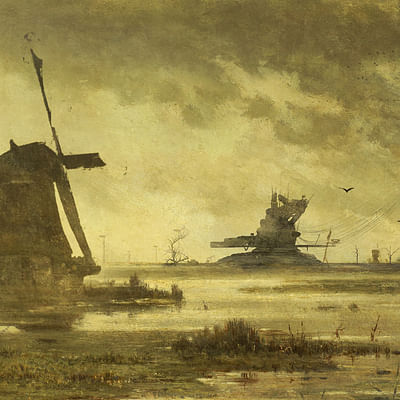

Share
0 Comments
Comment as :